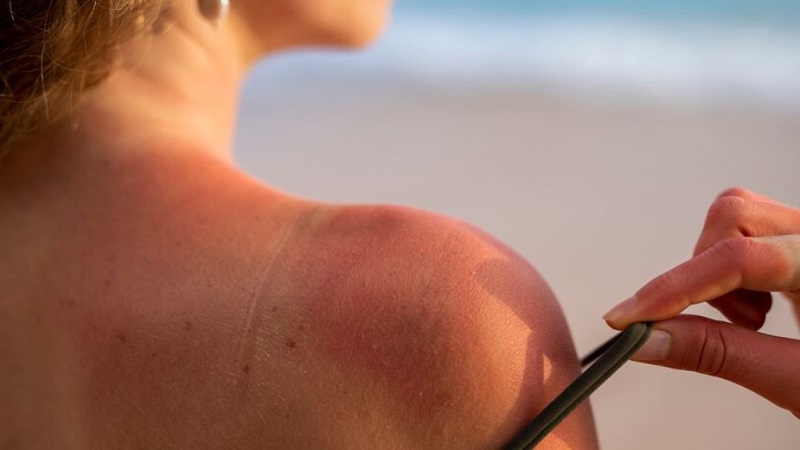We all love soaking up the sun; however, we often forget how harmful it can be for our skin. After a summer of fun in the sun, many of us are left with damaged skin that needs some serious TLC. Fortunately, there are many ways to manage sun damage and restore healthy, glowing skin.
In this article, we’ll explore some effective methods to rejuvenate your skin after too much sun exposure.
Understanding Sun Damage
Sun damage refers to the harmful effect of ultraviolet (UV) radiation on the skin due to prolonged exposure. It occurs when UV rays penetrate the skin, damaging its DNA and cellular structures. You can often identify sun damage by looking for signs such as:
- Wrinkles and fine lines appearing earlier than expected
- Uneven skin tone or patchy discoloration
- Rough, leathery skin texture
- Visible blood vessels on the face
Exposing your skin to UV rays can adversely affect the skin and, eventually, your appearance. It can cause:
- Sunburn
- Premature aging
- Dark spots and hyperpigmentation
- Dry and rough skin texture
- Increased risk of skin cancer
These problems don’t just appear after one day at the beach. They build up over time, which is why it’s crucial to take care of your skin year-round.
Hydration is Key
Sun exposure can leave your skin feeling dry and tight. The first step in repairing sun-damaged skin is to hydrate, hydrate, hydrate!
- Drink plenty of water throughout the day
- Use a gentle, hydrating cleanser
- Apply a moisturizer with ingredients like hyaluronic acid or glycerin
- Consider using a hydrating face mask once or twice a week
Remember, well-hydrated skin is better equipped to repair itself and fight off further damage.
Exfoliation for Renewal
Exfoliation is a great way to remove dead skin cells and encourage cell turnover. This can help fade dark spots and improve overall skin texture. However, be careful not to overdo it, especially if your skin is still sensitive to sun exposure. Start with a gentle exfoliant once a week and gradually increase frequency as your skin tolerates it.
There are two main types of exfoliation:
- Physical exfoliation: Using scrubs or brushes to manually remove dead skin cells
- Chemical exfoliation: Using acids like AHAs or BHAs to dissolve dead skin cells
Both can be effective, but chemical exfoliation is often gentler and more suitable for sun-damaged skin.
Antioxidants to the Rescue
Antioxidants are essential for your skin when it comes to fighting sun damage. They help neutralize free radicals, which are unstable molecules that can cause further damage to your skin. Some powerful antioxidants to look for in skincare products include:
- Vitamin C
- Vitamin E
- Niacinamide
- Green tea extract
- Resveratrol
Using products with these ingredients can help brighten your skin, reduce inflammation, and protect against future damage.
Retinoids for Repair
Retinoids, which are derived from Vitamin A, are excellent for treating sun damage. They can help:
- Increase cell turnover
- Stimulate collagen production
- Fade dark spots
- Improve skin texture
If you’re new to retinoids, start with a low concentration and use it only a few times a week. Gradually increase usage as needed. Remember to always use sunscreen during the day when using retinoids, as they can make your skin more sensitive to UV rays. Incorporating products like amazon collagen for women into your routine can also help improve skin elasticity and support overall skin health.
Professional Treatments
For more severe sun damage, you might want to consider professional treatments. These can include:
- Laser treatments
- Microdermabrasion
- A chemical peel
- Intense Pulsed Light (IPL) therapy
These treatments can be more aggressive in targeting sun damage but also come with a higher price tag and potential downtime. Always consult a dermatologist or skincare professional to determine the best treatment for your skin.
Prevention is Better Than Cure
While these treatments can help repair existing sun damage, the best approach is to prevent damage in the first place. Make sure to:
- Wear broad-spectrum sunscreen with at least SPF 30 every day
- Seek shade during peak sun hours (usually 10 am to 4 pm)
- Wear protective clothing, including hats and sunglasses
- Reapply sunscreen every 2 hours or more often if swimming or sweating
Remember, it’s never too late to start protecting your skin from the sun!
Patience is a Virtue
Reversing sun damage takes time, so don’t expect overnight results. Be consistent with your skincare routine and give it at least a few weeks to a couple of months before you start seeing significant improvements. Your skin is constantly renewing itself, so with proper care and protection, you can say goodbye to sun damage and hello to healthier, more radiant skin.
In conclusion, while sun damage can be frustrating, there are many ways to rejuvenate your skin. From simple at-home treatments to more advanced professional procedures, you have options. The key is to be patient and consistent and always prioritize sun protection. Your future self will thank you!
